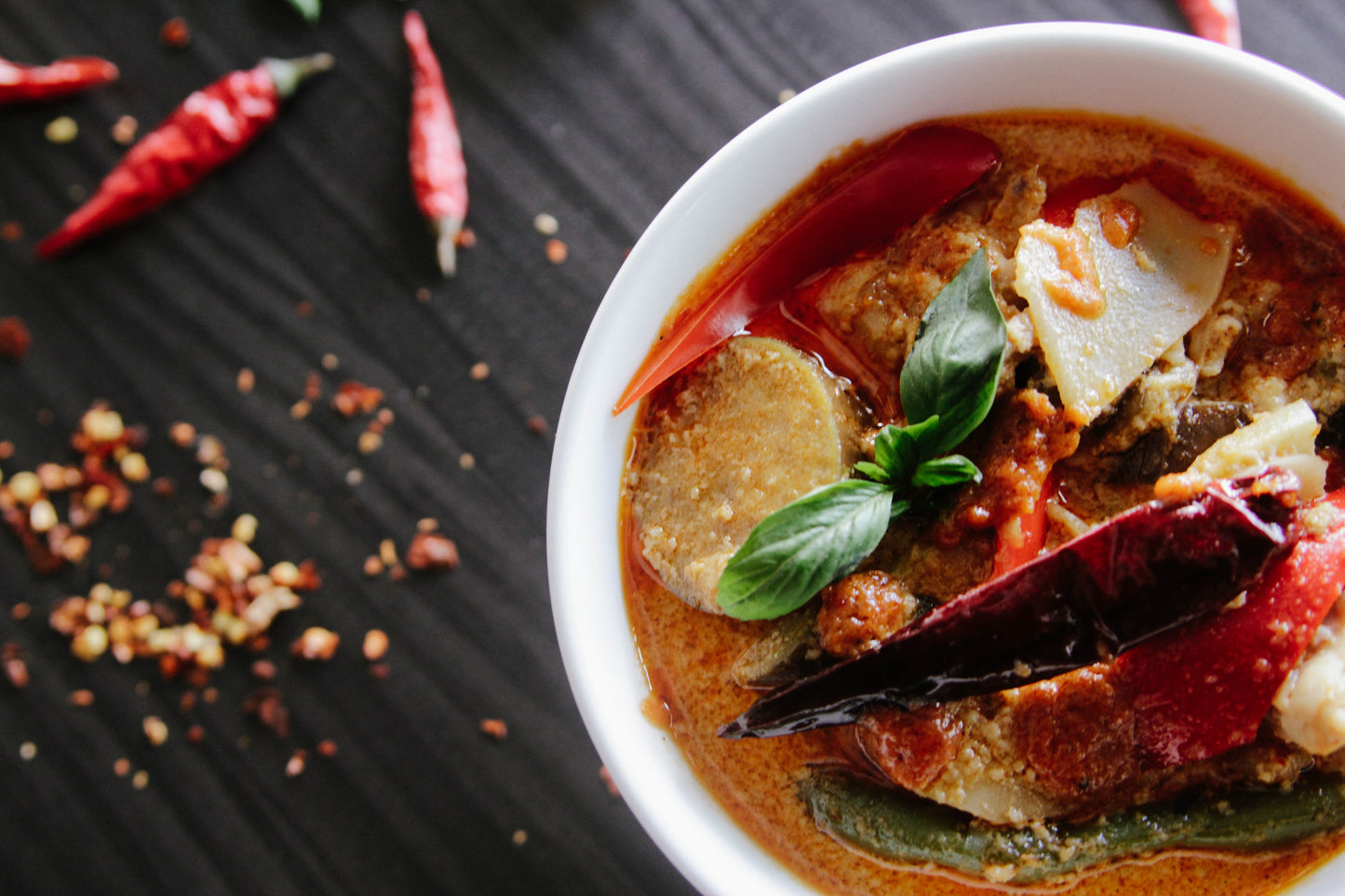BUY 3, GET 1 FREE
Mix and match any products on the store! Add 4 products to your cart and use this code to get 1 of 4 free. Copy the code below + paste it at checkout!
This store requires javascript to be enabled for some features to work correctly.

What Makes Food Spicy?
If you enjoy spicy cuisine, you may have pondered what gives it its unique spiciness. This section will examine the chemistry of the spice as well as the various elements that give it its heat.
The Science of Spice: Spicy food gets its heat from a chemical compound called capsaicin, which is found in chili peppers. Your body's natural response to pain is triggered when capsaicin attaches to pain receptors in your mouth, giving you a burning sensation. The Scoville scale is used to measure the heat of chili peppers and other spicy foods, with higher numbers indicating a greater level of heat.
Spicy Ingredients: Types The components that can be used to make meals hotter come in a wide variety. Some popular ones include:
The Global Appeal of Spicy Food
People adore spicy food all throughout the world, and many cultures all have their own distinctive ways of preparing it. In this section, we will explore the cultural significance of spicy food in different regions and highlight some popular spicy dishes from each.
Latin America: Latin American cuisine is known for its bold flavors and liberal use of spices. Hot peppers like jalapenos, serrano peppers, and habaneros are widely used to season foods like tacos, salsas, and guacamole in areas like Mexico. In the Caribbean, spicy jerk chicken is a popular dish made with a blend of fiery spices.
Asia: Especially in nations like India, Thailand, and China, spicy food is a mainstay of many Asian cuisines. Spices like chili powder, cumin, and coriander are responsible for the heat in Indian cuisines like vindaloo and tandoori chicken. Thai food includes hot curries and noodle dishes created with spices like ginger, lemongrass, and Thai chili peppers. The numbing and fiery Sichuan peppercorn is a key ingredient in Sichuan cuisine, which is well-known in China.
Middle East: The cuisine of the Middle East features a lot of spicy food as well. Such items include the hot red pepper paste harissa and the spicily flavored tomato and egg dish shakshuka. In Iran, a spice blend called advieh is used to add heat and depth of flavor to stews and rice dishes.
West Indies: provide examples of popular spicy dishes from each region, including jerk chicken from Jamaica, Trinidadian doubles, and Indian vindaloo.
The global appeal of spicy food is a testament to its ability to bring people together across cultures and borders.
Spicy food not only provides a delicious burst of flavor, but it may also offer several potential health benefits. Here are some of the most notable benefits of consuming spicy food:
Although some scientific evidence exists to support these claims, it's crucial to remember that eating food that is overly spicy may have adverse consequences on some people, such as heartburn or stomach irritation. Moderation is essential in all situations.
Overall, incorporating spicy food into your diet may offer several potential health benefits, in addition to providing a flavorful and exciting culinary experience.
How to Incorporate More Spice into Your Diet
The concept of adding more heat to one's diet may sound intimidating to those who are new to the realm of spicy food. However, there are several ways to gradually increase your spice tolerance and enjoy the bold flavors of spicy food. Here are some tips to get you started:
By gradually increasing your spice tolerance and experimenting with different ingredients and cuisines, you can bring more heat and flavor into your diet.
Section: Spicy Food Challenges and Contests
Spicy food challenges and contests have become increasingly popular in recent years, with participants testing their limits by consuming extremely hot foods or completing various challenges involving spicy ingredients. The "hot wing challenge" is one of the most well-known contests, in which competitors attempt to consume the most intensely spicy chicken wings in the shortest length of time.
Even while taking on these challenges can be exhilarating and fun, it's crucial to be cautious and aware of the risks. Very hot food consumption might make some people feel uncomfortable, give them heartburn, and possibly worsen their health.
If you do choose to participate in a spicy food challenge, here are a few safety tips to keep in mind:
While spicy food challenges can be a fun way to test your limits and explore new flavors, always prioritize your health and safety.
Conclusion:
In this post, we've explored the world of spicy food, from the science behind its heat to its cultural significance in different regions. We've also discussed the potential health benefits of consuming spicy food and offered tips for incorporating more spice into your diet. And for those who are feeling adventurous, we've touched on the growing trend of spicy food challenges and contests.
We encourage our readers to embrace the heat and explore the bold and flavorful world of spicy food. If you're not used to eating spicy food, don't be scared to try new spices and cuisines. Just remember to start out slowly. We've provided a few links to spicily flavored dishes and other information to get you going. And we'd love to hear from you, so let us know in the comments below which spicy dishes or eateries are your favorites!